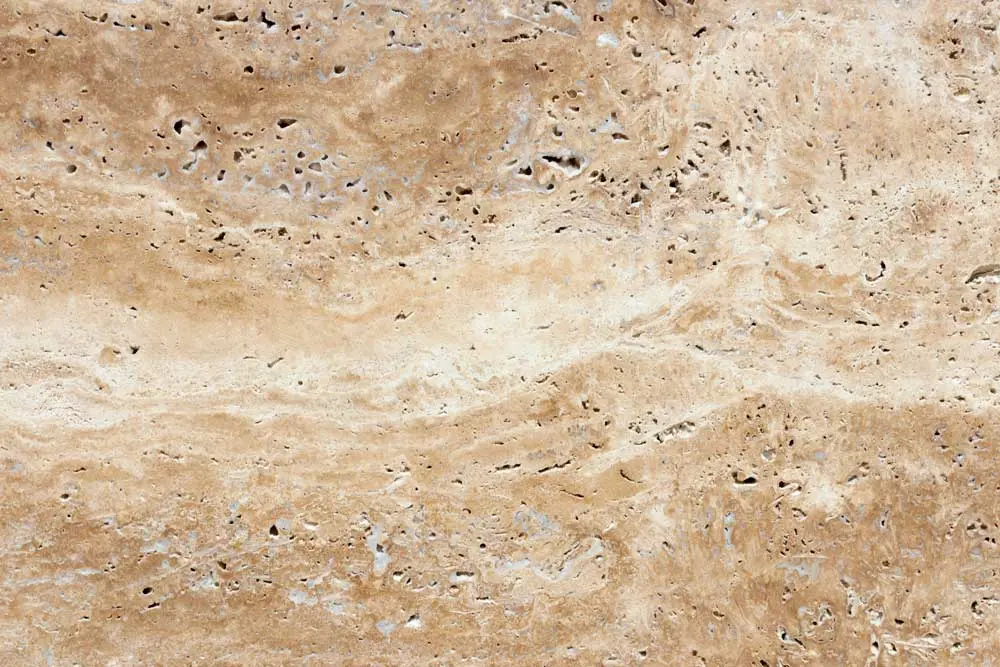Introduction:
In the world of natural stones, few materials boast the timeless beauty and unique characteristics that define travertine. A sedimentary rock formed over centuries, travertine is a testament to nature’s artistry. In this exploration, we unveil the allure of travertine, delving into its formation, mineral composition, applications in home design, and a balanced view of its pros and cons.
Formation and Composition:
Travertine’s journey begins beneath the Earth’s surface, where mineral-rich waters percolate through limestone, creating the intricate patterns and unique characteristics that define this natural stone. The formation process involves the deposition of minerals, primarily calcium carbonate, in layers, resulting in the distinct appearance of travertine.
- Formation Process:
- Travertine is a byproduct of dissolved minerals carried by groundwater. As this water reaches the surface and evaporates, the minerals are left behind, forming layers of sediment that solidify into travertine. This geological dance creates the signature pores and voids characteristic of travertine, contributing to its aesthetic appeal.
- Mineral Composition:
- The predominant mineral in travertine is calcium carbonate, derived from dissolved limestone. Additional minerals and impurities, such as iron, create variations in color and veining, making each travertine slab a unique work of art. The porous nature of travertine also contributes to its ability to absorb water, giving it a distinct tactile quality.
Applications in Home Design:
Travertine’s versatility extends across various applications in home design, both indoors and outdoors. Its aesthetic appeal and practical characteristics make it a popular choice for homeowners and designers alike.
- Flooring:
- Travertine flooring brings an air of sophistication to interiors. Its natural warmth and timeless charm suit various design styles, from rustic to contemporary. The natural color variations and veining patterns create a visually dynamic floor surface.
- Countertops and Vanities:
- Travertine countertops and vanities add a touch of luxury to kitchens and bathrooms. The stone’s durability and resistance to heat make it an ideal surface for these high-traffic areas, providing both functionality and visual appeal.
- Wall Cladding:
- Using travertine for wall cladding introduces texture and visual interest to spaces. Whether as an accent wall in living rooms or as an exterior facade, travertine elevates the aesthetic value of a home.
- Pool Decks and Patios:
- Travertine’s ability to stay cool underfoot makes it an excellent choice for pool decks and patios. Its porous nature allows for efficient water drainage, preventing the surface from becoming slippery.
Pros and Cons of Travertine:
While travertine exudes timeless beauty and practical advantages, it’s essential to consider both sides when incorporating this natural stone into your home design.
- Pros:
- Aesthetic Appeal: Travertine’s natural patterns and color variations create a visually captivating surface, adding character to any space.
- Durability: With proper care, travertine is a durable material suitable for high-traffic areas. It can withstand the rigors of daily use and still maintain its beauty over time.
- Versatility: Travertine’s versatility allows it to be used in various applications, from flooring and countertops to outdoor spaces, providing a cohesive design throughout the home.
- Coolness Underfoot: Especially beneficial for pool decks and outdoor areas, travertine remains cool even in hot weather, making it comfortable for barefoot walking.
- Cons:
- Porosity: Travertine is a porous stone, making it susceptible to staining if not properly sealed. Regular sealing is necessary to maintain its appearance and prevent water absorption.
- Maintenance Requirements: To preserve travertine beauty requires regular maintenance, including sealing and periodic cleaning with pH-neutral products to avoid damage.
- Limited Color Options: While the natural variations are a pro for many, those seeking a consistent color throughout may find the limited color options of travertine to be a drawback.
- Initial Cost: The initial cost of travertine, including installation, can be higher compared to some alternative materials. However, many find the long-term benefits justify the investment.
Conclusion:
In conclusion, travertine emerges as a symbol of timeless beauty and geological artistry, bringing a touch of nature into our homes. From its formation beneath the Earth’s surface to its diverse applications in home design, travertine stands as a versatile and visually captivating natural stone. As homeowners and designers navigate the pros and cons of integrating travertine into their spaces, the key lies in understanding and appreciating its unique characteristics. Whether used for flooring, countertops, or outdoor areas, travertine’s enduring appeal and aesthetic charm continue to make it a preferred choice for those seeking to infuse their homes with the timeless beauty of natural stone.

